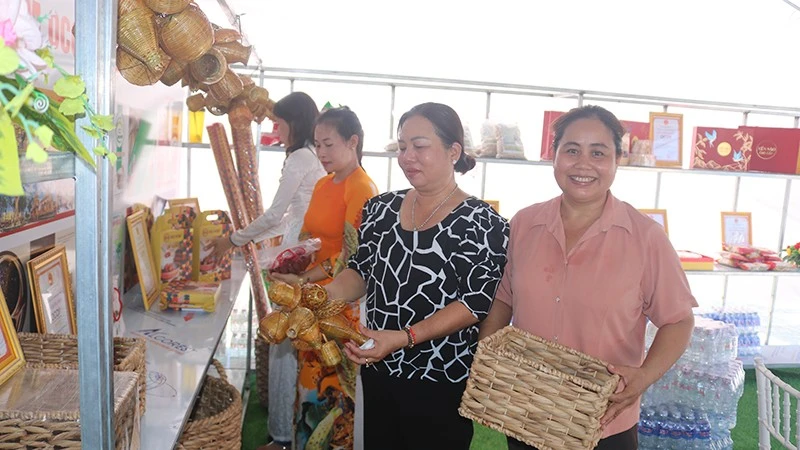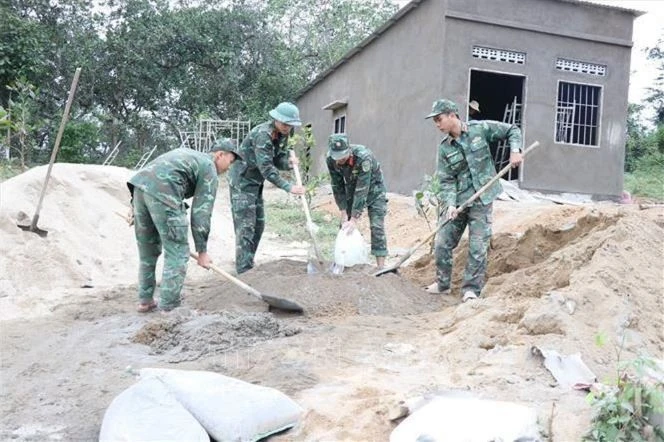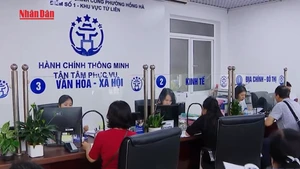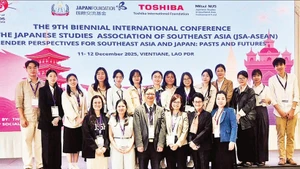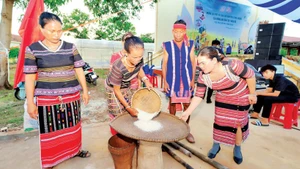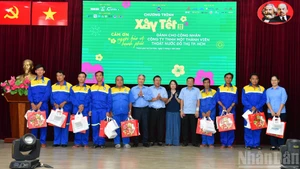The restoration and effective, sustainable development of craft villages will contribute to building a civilised, modern countryside. Currently, the coastal area of the province has more than 12,000 production establishments and 13 craft villages, creating sustainable livelihoods for more than 30,000 rural workers.
Bustling mat and carpet craft
According to Le Quang Thanh, Vice Chairman of the People’s Committee of Nhi Long Commune, the main products of the local craft villages are made primarily from several trees such as coconuts, serving both domestic and export markets.
Every year, the industrial and handicraft village of Nhi Long Commune can supply the domestic and export markets with nearly 2 million products of various types. Through this, more than 3,000 rural workers earn a stable income of 6–7 million VND per person per month.
For many years, the province has prioritised investment in transport and electricity infrastructure, creating momentum for local socio-economic development. In addition to planning craft village systems suitable for their potential, the province also encourages establishments, cooperatives, and enterprises to invest in modern equipment and technology, improve designs, and diversify products.
Nguyen Thi Minh Trang, owner of a mat weaving workshop in Duc My Hamlet, Nhi Long Commune, said that to increase labour productivity, her family has invested nearly 300 million VND to purchase 10 semi-automatic mat weaving machines. The advantage of weaving mats with semi-automatic machines is that efficiency is ten times higher compared to manual weaving. As a result, her family’s revenue and profits have increased, and the workers at the workshop saw their incomes rise by 2–3 times compared to before.
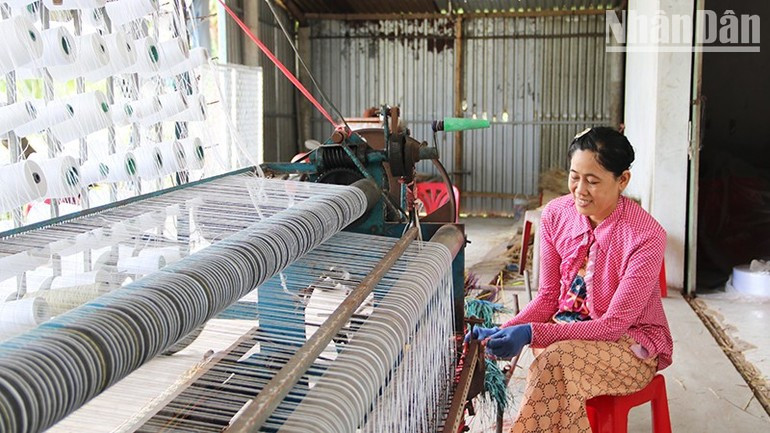
Since 2021, Ut Mung Company Limited and Tan Phat Coconut Company Limited have maintained numerous export orders to foreign markets with products such as coconut fibre carpets and ropes, generating nearly 100 billion VND in annual revenue. In 2024, the Quyet Tam Mat and Carpet Weaving Cooperative in Nhi Long Commune processed more than 30,000 products, including white mats, green rush mats, and others, creating jobs for nearly 100 rural workers.
Recently, some production establishments in the craft villages have produced organic fertiliser using raw materials such as coconut husk dust and probiotics, helping to increase soil fertility. The industrial and handicraft village of Nhi Long Commune has become increasingly vibrant with industries such as coconut fibre yarn, clean soil production, and coconut fibre carpets.
Creating livelihoods for rural workers
The Ca Hom – Ben Ba mat-weaving craft village of the Khmer community in Ham Giang Commune has been preserved and developed for nearly 100 years. In the past, during festivals and Tet, the craft village supplied the market with tens of thousands of double-sided floral mats with durable, beautiful, and unique patterns, providing jobs for more than 300 rural workers.
The floral mats of the craft village always sold at higher prices than those from other places, but supply was still insufficient. At that time, in the two hamlets of Ca Hom and Ben Ba, every household had 2 to 3 looms, operating day and night.
Over time, the craft village faced the risk of decline as floral mats received little attention in terms of design innovation, while raw materials were lacking and thus they could not compete in the market. Most households weaving mats manually either hung up their looms or wove only occasionally.
To preserve the traditional craft in association with tourism development, the local authorities implemented policies on financial support, vocational training, and product design research.
Accordingly, the craft village’s mat weaving establishments received financial assistance to invest in mechanical looms, creating jobs for more than 100 workers with daily incomes of 200,000–250,000 VND per person.
In August 2024, the Ministry of Culture, Sports and Tourism issued a decision to include the Ca Hom – Ben Ba mat-weaving craft of Ham Giang Commune in the list of national intangible cultural heritage.
In addition, the provincial Department of Industry and Trade coordinated with Dai An Commune to organise training courses for 70 members of the Giong Dinh weaving cooperative group. As a result, members have created small and intricate woven products for decoration, which have been well received by both domestic and international markets.
The Thach Tri Canh bamboo furniture household business in Ham Giang Commune said that thanks to support from the industry and trade sector with drilling and chiselling machines, the production time for a set of bamboo furniture was cut in half. Currently, the production establishments of the industrial and handicraft village in Ham Giang Commune have replaced traditional items with higher-value products such as bamboo furniture, cabinets, bookshelves, and agricultural product display shelves.
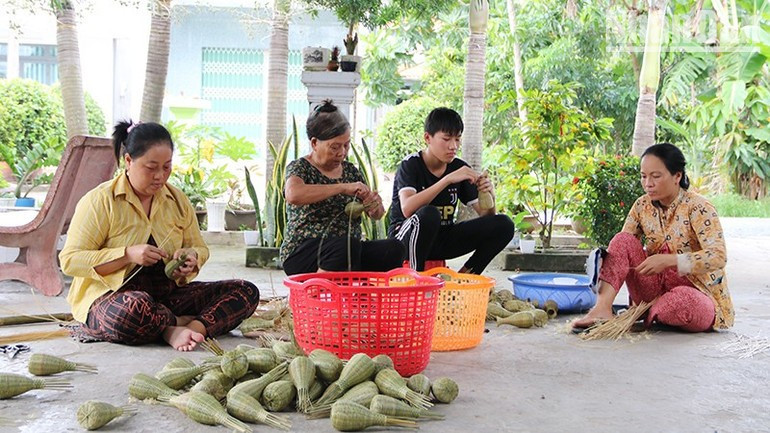
The miniature rural household utensil set by Diep Thi Trang’s household business in Dai An Commune and the bamboo furniture set by Tri Canh’s household business in Ham Giang Commune have been recognised by the Ministry of Industry and Trade as outstanding rural industrial products. This shows that the implementation of policies on vocational training and trade promotion has revived and developed weaving and bamboo furniture making among the Khmer community in the right direction.
According to the Department of Agriculture and Environment of Vinh Long province, surveys at the coastal craft villages showed that electricity and transport infrastructure remained difficult, workers lacked creativity, and productivity was low. The province has proposed solutions for future development of the villages, including inviting investment in equipment and production technology, diversifying products, and providing vocational training for workers and artisans. The effective and sustainable development of craft villages will contribute to building a civilised and modern countryside.
